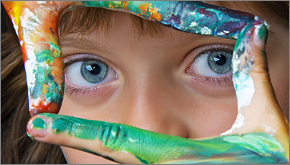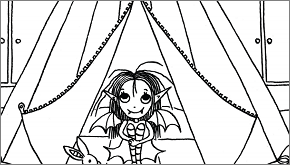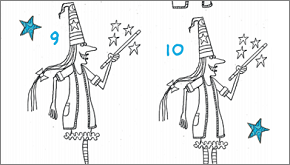Art and design at primary school

Art and design remains a firm favourite for many primary school-age children. In primary school, children are given opportunities to explore their ideas by experimenting, inventing and creating their own varied works of art using a range of materials. They will learn how to draw, paint, sculpt and explore other art, craft and design techniques.
Another important aspect of the art and design curriculum is learning about how art has shaped our history and how it reflects it.
Art and design in the National Curriculum in England
Early Years Foundation Stage (EYFS)
Giving children opportunities to be imaginative, explore different materials and develop their ideas is an important part of the Early Years Foundation Stage, mainly within the 'expressive art and design' area of learning. Children are encouraged to practise their handling, moving and control skills (for example, by painting or using clay). Materials should be accessible for children to develop and explore their ideas and to be imaginative.
Key stage 1 (Years 1 and 2)
The content of art and design teaching and learning is set out in the 2014 National Curriculum for primary schools in England. Pupils should be given opportunities to use a range of materials creatively to design and make products through drawing, painting and sculpture. They explore different techniques in using colour, pattern, texture, line, shape, form and space.
Another important aspect of the art and design curriculum is learning about the work of a range of artists, craft makers and designers, describing the differences and similarities between different practices and disciplines, and making links to their own work.
Key stage 2 (Years 3 to 6)
The content of the art and design curriculum in Key Stage 2 builds on what children have learned in Key Stage 1. Children should develop and improve their skills in drawing, painting and sculpture using a range of different materials. They are expected to create sketch books to record their learning and to use them to review and revisit ideas. They continue to learn about great artists, architects and designers in history.
The art and design curriculum in primary schools in Scotland, Wales and Northern Ireland
- In Scotland, art and design is included within the Expressive Arts curriculum area. For more details visit Education Scotland.
- Details about art and design in the national curriculum for Wales can be found on the Learning Wales website.
- In Northern Ireland, art and design is included within The Arts area of learning. Visit CCEA for details.
How can I support my child with art?
1. Get messy!
Try to get hold of as many different types of drawing and painting resources as you can to let your child get creative and explore creating art using different materials. Paints, chalk, crayons, pens, pencils, modelling clay and much more can be found in discount shops. Just don’t forget to put lots of newspaper down first!
2. Use household objects creatively
Alternatively, instead of buying materials, let them get creative using things around the house – for example, pasta and pulses to create pictures using glue. You could even experiment with colour-changing art – find out more here.
3. Keep a sketch book
Encourage your child to keep a sketch book. Suggest that they take it with them when they go out so that they can look for things to sketch – a tree, a building, a scene. Alternatively, if they see something they would like to draw, take a photo on your phone and let them sketch from it when they are home.
4. Celebrate your child's art
Praise your child’s creations and encourage them not to get disheartened if they feel they have made ‘mistakes’. Explain that art is about being creative and trying out different things. There is no right or wrong way to do things. You could even ‘frame’ their work using coloured paper or card and create a little gallery on the kitchen wall or in their bedroom to display their work.
5. Discuss and enjoy art together
Find out about local art galleries or museums that you can visit with your child. Encourage them to talk about what they see and to share their opinions – about subject matter, colours, what materials the artist used, and so on.


